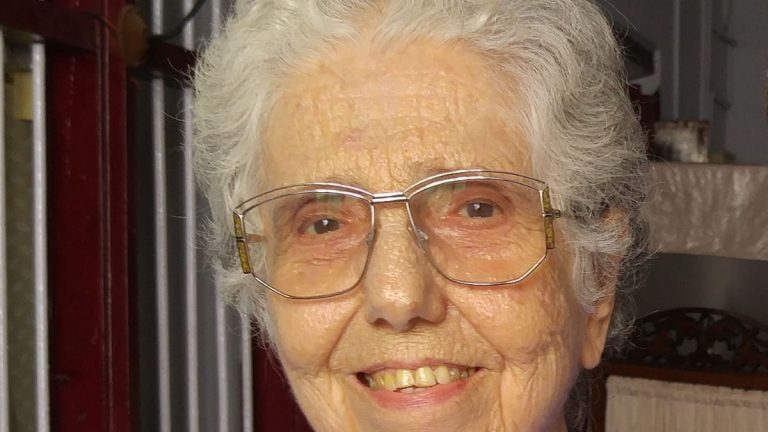Last updated:

Queenie Hallegua, 89, was the last woman of the Jewish community in Cochin. (Image source: Consulate General of Israel in Bangalore)
Queenie Hallegua's nephew Keith Hallegua, 65, will be the only representative of Cochin's Paradesi Jews, who are “white” Jews of European or Middle Eastern descent
Kochi's Paradesi Jews now have only one surviving member after the death of 89-year-old Queenie Hallegua of Mattancherry district. She was the last woman from Kochi's Jewish community to die at her residence due to age-related illnesses on Sunday (August 11).
Now her 65-year-old nephew Keith Hallegua will be the only representative of Cochin's once vibrant community of “white” Jews of European or Middle Eastern descent.
Queenie was the wife of the late Samuel H Hallegua and is survived by a son and daughter, both of whom settled in the United States with their spouses and children. Her funeral was held in a Jewish cemetery in accordance with community rites, family sources said.
“She had been unwell for some time. When her health deteriorated, her children came to her. There will now be seven days of mourning. After that, in 11 months, they will build a tomb for her, ” said MC Praveen, trustee of Paradesi Synagogue.
According to Jewish culture, 10 male members are required to perform such a ceremony, and the funeral is also held according to tradition. Praveen said two Jews who were working as tourists in Fort Kochi also attended the funeral.
She is the daughter of the late S Koder, who was considered an iconic member of the city's Jewish community. She served as Warden and Managing Trustee of Paradesi Synagogue from 2012 to 2018 and as Managing Partner of S Koder Private Limited until 2011.
S Koder introduced electricity distribution in Kochi and was the first to introduce ship services in the city. He is also credited with establishing the first department store in Kerala.
The Paradesi Synagogue in the Jewish town of Mattancherry is a historical monument that attracts tourists. It was built in 1568 AD by Samuel Castiel, David Belila and Joseph Levi. It is the oldest active synagogue in the Commonwealth.
Never wanted to leave Kochi and move to Israel
Five generations of Queenie's family have lived in Kerala, and she earned a bachelor's degree in botany from St. Teresa's College in Ernakulam district of Kerala in the late 1950s. “I got married not long after. Life was very different then,” she told news18 Back in 2017.
She talked about how the establishment of Israel in 1948 brought significant changes in the lives of Jews living in Kochi. And how some members of the community chose to give up everything they had in their small town and go to Israel.
She claimed that the Jews of Kerala were among the more fortunate members of the community. Not only are they allowed to practice their religion, but they are also treated with due respect and become an integral part of society.
Before her husband's death, the couple traveled frequently to the United States and Israel. However, she never wanted to leave India as she was used to life here and her late husband was also a patriot who was keen to live in Kochi till his last breath.
Who are the Jews of Cochin?
This Jewish community in Kerala is one of the oldest in the global Jewish diaspora. Cochin Jewish tradition holds that after the destruction of the Second Temple in Jerusalem in 74 AD, some 10,000 Jews fled Palestine and ended up in the state.
The descendants of the original settlers, who integrated and intermarried with the local people, are known as Cochin's “black Jews”, while the descendants of the mainly European and Middle Eastern immigrants of the 15th and 16th centuries are known as “white Jews”.
For centuries, the two communities had little contact, but dwindling numbers eventually forced them together. The major exodus occurred in the late 1940s, triggered by the end of World War II, India's independence and, most importantly, the creation of the state of Israel.
By 1954, approximately 60% of Cochin's Jews had immigrated to Israel. Migration continued, and by the late 1970s, 95 percent of the community had left.
(Institutional investment)
